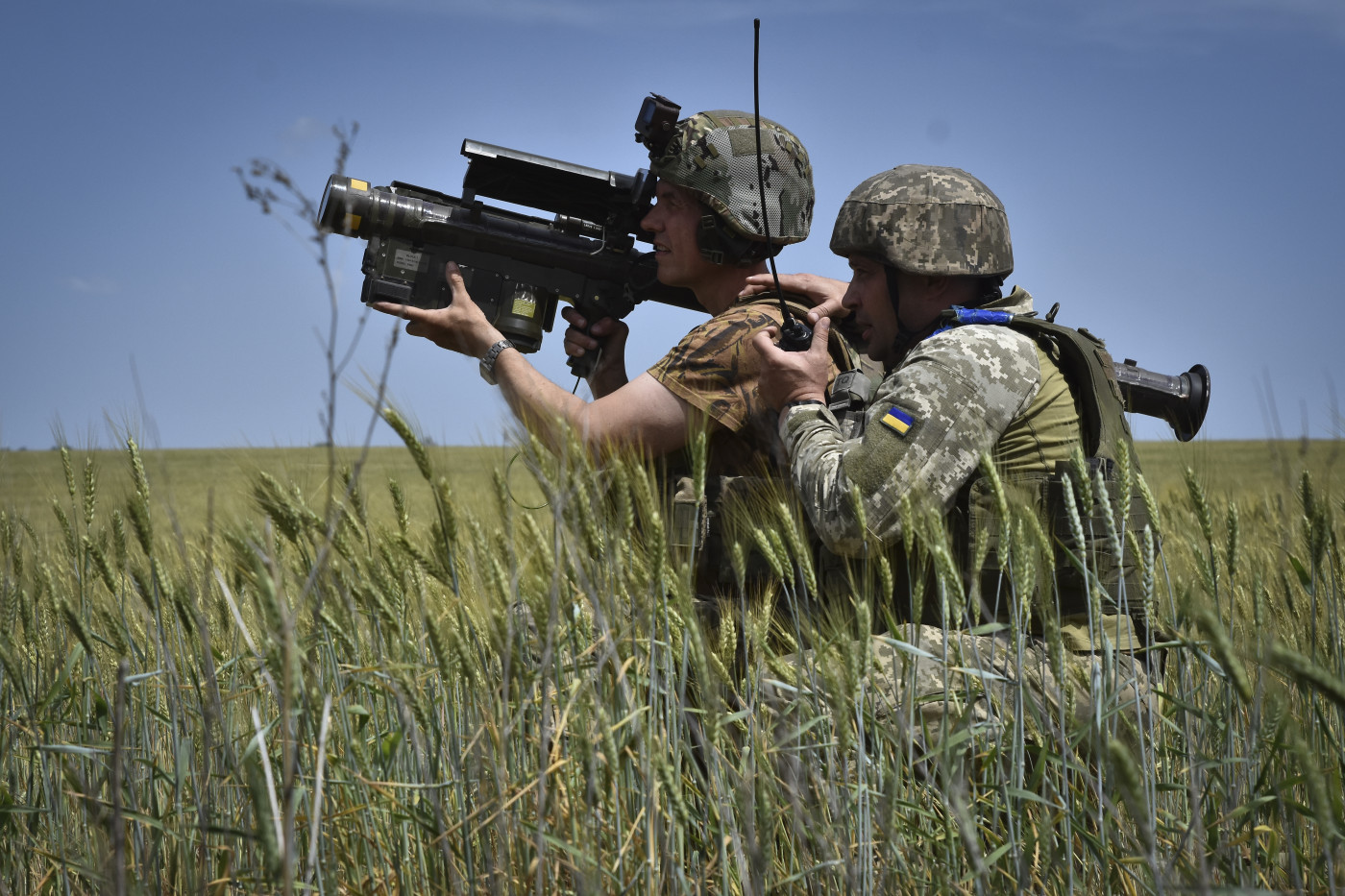Satellite Images Show Russia's 'Nebo-M' Radar System Targeted in Strike
Satellite images released in the aftermath of a strike in Ukraine's occupied Luhansk region suggest that Kyiv's forces targeted a Russian long-range radar system.
The photos, dated May 10 and 28, are from California-based global imaging company Planet Labs. They were obtained by Radio Svoboda, the Russian service of the U.S.-funded Radio Free Europe/Radio Liberty on Tuesday, after a reported attack by Kyiv's forces using U.S.-supplied missiles on an airfield in Luhansk. The attack may have struck Russia's prized Nebo-M radar system, the service said.
Kyiv has not claimed responsibility for the attack. Newsweek has reached out to the Russian Ministry of Defense for comment via email.
1/2 As @planet satellite images show, 17 days before the Ukrainian strike on the Luhansk aviation school airfield, on May 10th, parts of the Russian integrated multi-functional radar system 'Nebo-M' were present there. Thanks to @vcdgf555 for helping identify the vehicles. https://t.co/GRAMxnPwZg pic.twitter.com/tMHhhc5bSx
— Mark Krutov (@kromark) May 28, 2024
Russian war correspondent Yuri Kotenok said Tuesday that there was a "massive fire after an explosion" on the outskirts of the city of Luhansk. He said on his Telegram channel that his sources say the attack was carried out by Ukraine using either ATACMS ballistic missiles or HIMARS—M142 High Mobility Artillery Rocket System.
Artem Lysohor, the Ukrainian head of the Luhansk region's administration, said the explosions took place in the vicinity of a former aviation school, the Luhansk Higher Military Aviation School of Navigators, and an aircraft repair plant, which is located nearby.
Lysohor said specifics aren't known at this point, but "losses of aviation equipment" may be "significant."
Russia has been stationing its troops and military equipment, including helicopters, in the area since the start of the full-scale invasion of Ukraine, Ukrainian media reported.
Video of a training exercise in the Urals with a Nebo-M radar system.https://t.co/R5Jx0bXkPB pic.twitter.com/PoYEieTNQ4
— Rob Lee (@RALee85) January 14, 2020
Radio Svoboda said that the satellite images show the consequences of the attack on the airfield of the Luhansk Higher Military Aviation School of Navigators. One photo dated May 28 shows traces of a huge fire; and a photo of the same location taken on May 10 shows parts of Russia's prized Nebo-M radar system. This is designed to detect aerodynamic and ballistic objects at medium and high altitudes.
Radio Free Europe/Radio Liberty journalist Mark Krutov said on X, formerly known as Twitter: "As @planet satellite images show, 17 days before the Ukrainian strike on the Luhansk aviation school airfield, on May 10, parts of the Russian integrated multifunctional radar system 'Nebo-M' were present there.
"I also want to underline an important caveat again: this @planet HR image was taken 17 days prior to the strike. However, I haven't noticed many changes in the tracks in the field in the meantime," Krutov wrote.
In 2021, Yan Novikov, director general of Russia's air-defense systems manufacturer Almaz-Antey, described the Nebo-M radar as "the menace of stealth technologies." He said that it can detect advanced aircraft, including U.S. F-22 Raptor and F-35 Lightning II fighter jets.
Russia's state-run news agency Tass reported that the Nebo-M, which has been used by the Russian military since 2017, is capable of detecting aircraft and ballistic missiles at a distance of 1,000 kilometers (about 620 miles).
It remains unclear which weapons were used in the attack. The U.S. recently secretly sent Ukraine Army Tactical Missile Systems (ATACMS) capable of hitting targets nearly 200 miles away. The U.S. has also supplied Ukraine with at least 39 HIMARS since Russia's full-scale invasion began in February 2022.
Do you have a tip on a world news story that Newsweek should be covering? Do you have a question about the Russia-Ukraine war? Let us know via worldnews@newsweek.com.
Disclaimer: The copyright of this article belongs to the original author. Reposting this article is solely for the purpose of information dissemination and does not constitute any investment advice. If there is any infringement, please contact us immediately. We will make corrections or deletions as necessary. Thank you.




